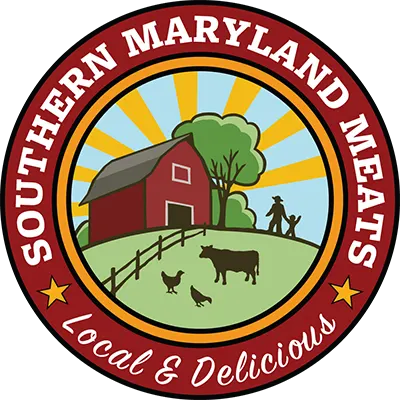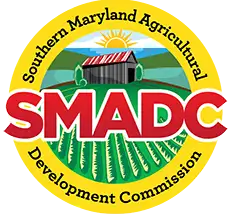Terms:
Feed and Nutrition
Grass-fed: Grass and/or forage shall be the feed source consumed for the lifetime of the ruminant animal, with the exception of milk consumed prior to weaning. The diet shall be derived solely from forage and animals cannot be fed grain and must have continuous access to pasture during the growing season. Diet should not be supplemented with grain, animal by-products or *hormones. Animals may have access to free choice mineral to ensure their bodies get needed nutrients grass may lack. Protein tubs are not acceptable in grass fed protocols. Feeding molasses protein tubs to grass fed is prohibited.
Grass-finished: Finishing is just another word for the time that cattle are normally fattened for the last few months before processing. Typically, feed lots finish cattle for 90 to 160 days on grain, usually corn, whereas, grass finished cattle are fattened on grass only until the day that they are processed. Diet should not be supplemented with grain, animal by-products or *hormones. Animals may have access to free choice mineral to ensure their bodies get needed nutrients grass may lack. Protein tubs are not acceptable in grass fed protocols. Feeding molasses protein tubs to grass fed is prohibited.
Grain/corn-fed: Cattle raised on pasture from birth to about 7-9 months, then fed small amounts of hay or straw supplemented with grain, soy and other ingredients. Fed a balanced diet that includes grain. Does not necessarily mean feed lot, animals are supplemented with grain to make up protein content that cannot be obtained from environment.
Grain/corn-finished: Cattle fed hay or straw supplemented with grain, soy and other ingredients for a minimum of 90 days. Fed grain to increase fat content on the animal.
Soy-free: Animals are fed a diet that gets the protein from a source other than soybean products. Animal feeds do not contain soybean meal, whole soybeans, extruded soybeans or any other soy based products.
GMO-free: GMO are plants or animals that have been genetically modified by inputting DNA from other species. Animals are fed a diet that is free from any genetically modified organisms. GMO free feeds are identified by the feed labels.
Raising, Health & Wellbeing
Humane treatment: Animals in the Southern Maryland Meats program are humanely raised on Southern Maryland family farms. The animals are able to express normal behaviors and live in an appropriate and comfortable environment that includes sufficient space with appropriate access to the outdoors and pasture. Animals have proper facilities with clean and sufficient food and water, shelter, a resting area, and company of their own kind. Animals have a healthy life, benefiting from disease and injury prevention and rapid diagnoses and treatment. Farm owners have a good working knowledge of their system and the animals in their care. Southern Maryland Meats animals are also humanely transported and slaughtered.
Naturally-raised: Livestock used for the production of meat and meat products that have been raised entirely without *growth promotants, antibiotics (except for ionophores used as coccidiostats for parasite control), and have never been fed animal (mammalian, avian, or aquatic) by-products derived from the slaughter/harvest processes, including meat and fat, animal waste materials (e.g., manure and litter), and aquatic by-products (e.g., fishmeal and fish oil). (USDA definition, 2009)
All products labeled with a naturally raised marketing claim must incorporate information explicitly stating that animals have been raised in a manner that meets the following conditions: 1) no growth promotants* were administered to the animals; 2) no antibiotics (other than ionophores used to prevent parasitism) were administered to the animal; and 3) no animal by-products were fed to the animals. If ionophores used only to prevent parasitism were administered to the animals, they may be labeled with the naturally raised marketing claims if that fact is explicitly noted. (USDA, 2009)
Organic: Livestock standards apply to animals used for meat, milk, eggs and other animal products represented as organically produced, and they require that:
- Animals for slaughter must be raised under organic management from the last third of gestation, or no later than the second day of life for poultry.
- Producers must feed livestock agricultural feed products that are 100 percent organic, but may also provide allowed vitamin and mineral supplements.
- Dairy animals must be managed organically for at least 12 months in order for milk or dairy products to be sold, labeled or represented as organic. (Dairy producers may use land that is transitioning during its third year of transition to organic certification to provide crops and forage for dairy animals during this 12-month period prior to the sale of dairy products as organic).
- Organically raised animals must not be given hormones* to promote growth, or antibiotics for any reason.
- Preventive management practices, including the use of vaccines, must be used to keep animals healthy. Producers must not withhold treatment from a sick or injured animal; however, animals treated with a prohibited medication may not be sold as organic.
- All organically raised animals must have access to the outdoors, including access to pasture for ruminants. They may be temporarily confined only for reasons of health, safety, the animal’s stage of production, or to protect soil or water quality. (USDA National Organic Program Livestock Standards, 2008)
Pasture-raised: Animals spend their lives outdoors, on pastures (barring birthing, inclement weather, and other limited circumstances) and animals forage for significant portions of their diets. Animals are able to go about normal behavior such as nesting, grazing, etc.
*Federal regulations prohibit the use of hormones in poultry, hogs, veal calves or exotic, non-amenable species.
Many SMM farms finish their meats through a process of dry-aging, which is defined as follows:
Dry-aging: Dry-aging is a process that tenderizes meats, concentrates the flavor and produces a superior taste and texture.
Dry-aging is costly because the process requires time and expertise. Meat that is dry-aged is hung for extended periods of time in a specialized cooler at carefully controlled temperatures and humidity levels.
The dry-aging process changes meat in two ways. First, moisture is evaporated which creates a greater concentration of flavor and taste. Second, the meat’s natural enzymes break down the connective tissue in the muscle, which leads to more tender meat. (The dominant mode of aging meat in the United States today is ‘wet-aging’ primarily because it takes less time and is less expensive. Wet-aged meat cuts are vacuum packed in plastic and boxed for immediate distribution.)
Average Dry-Aging period:
Beef: 14-21 days
Lamb/Goat: 7-14 days



